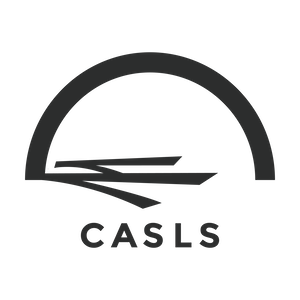| Body | Stephanie Knight is the Language Technology Specials for CASLS at the University of Oregon. This activity was developed in order to meet the various needs of students in her International Baccalaureate Diploma Programme Spanish course at Hillsboro High School, an urban high school in Nashville, Tennessee.
This activity aims at developing speaking and critical thinking skills among intermediate-mid and intermediate-high students and is designed to engage students in making cross-curricular connections via backwards design. In completing the activity, students are engaged in listening, reading, and speaking skills and will consider the importance of preserving neglected histories. For more context, please visit Voices from Our America (http://www.voicesamerica.org/).
Modes: Interpersonal Speaking, Interpretive Listening, Interpretive Reading
Objectives:
- Students will understand the importance of preserving and communicating neglected histories.
- Students will learn how to develop leveled questions using Costa’s levels of thinking.
- Students will learn the various histories of immigrant populations in their neighborhoods.
- Students will collaborate to preserve the spoken histories of immigrants in a work of art.
- Students will develop their descriptive and interpersonal speaking skills.
- Students will develop their interpretive listening and reading skills.
Resources: Reading and listening resources, Costa’s levels of questioning documents, student handout, voice recorder with web capabilities, a method to upload and share digital resources
Procedure:
- Students learn of art’s power to preserve and teach neglected histories with Diego Rivera’s “Dream of a Sunday Afternoon in Alameda Central Park” (https://www.youtube.com/watch?v=SPKNtuAxWaI –video in Spanish, https://www.youtube.com/watch?v=WIB4nuLFaCA –video in English, http://www.artecontacto.net/site/modules/news/article.php?storyid=7 –reading in Spanish, https://www.khanacademy.org/humanities/art-1010/art-between-wars/latin-american-modernism1/a/rivera-dream-of-a-sunday-afternoon-in-alameda-central-park -Reading in English). In the discussion that ensues, students should consider the following questions:
- Why was Diego Rivera, along with other muralists, commissioned to paint the history of Mexico?
- Which population of Mexico was likely to have been unaware of the country’s history?
- How does the painting of the mural connect to the ideals of the Mexican Revolution?
- How are histories lost over time?
- What histories become neglected overtime? Why?
- Is visual art an effective medium for preserving histories?
- What groups of people in your home country are in danger of losing their history? Why?
- Is preserving history a worthwhile task?
In closing the discussion, teachers should make sure that students consider that the family histories of immigrants in the United States are in danger of being lost given a variety of factors including the desire to assimilate into mainstream culture and oral histories never being preserved in a more permanent format.
- The next step is to engage the students in developing leveled questions to ask to an immigrant in the community. In order to document these questions, students will use a handout. For additional resources, please see Costa’s Levels of Questioning (http://blog.adambabcock.com/wp-content/uploads/2013/03/Costa-House-Levels-of-Questions.pdf), available in Spanish here.
- For homework, the students prepare a list of at least ten leveled interview questions to ask to an immigrant within the community. Here is a worksheet in Spanish that they can use, and here is an English version.
- After approving the students’ questions, give them a week to conduct the interviews. These interviews should be recorded and uploaded to a shared classroom location such as www.wordpress.com or Google Drive.
- Divide the students into teams of 4-5 people. Make sure that each team is of mixed ability levels to ensure the team’s ability to dissect the various interviews. Once the students are divided into teams, they should listen to the interviews and take notes.
- After everyone has listened to the interviews, students will engage in the backwards design of a piece of art by creating a list of the recurring themes from the various interviews and a plan for how to visually communicate said themes. The themes might include the changing concept of home, education, opportunity, violence, or loss.
- Lastly, students will create corporate artwork that preserves the various histories of the immigrants interviewed.
It is recommended that students are given at least 1-2 weeks to produce the art that they are creating in order to ensure its quality. Since communication of history is as important as the preservation of it, the artwork should be displayed in a public setting. The unveiling of the artwork could be very ceremonious, allowing the students to engage in further backwards design via the planning of the ceremony.
Adaptations: While students originally completed this activity through the creation of a mural on panels, students could easily use any media to create their public artwork. Such an adaptation would allow students who feel less confident in their artistic skills to be just as involved in the creation of the piece as the more artistically talented students. Another possible adaptation is for students to transcribe their interviews before sharing with their group members. In doing so, students who struggle with auditory processing would be able read along with the transcript while they are listening. Lastly, different components of the classroom discussion and group work could be conducted in English in order to tailor this activity to lower proficiency levels.
|
|---|
